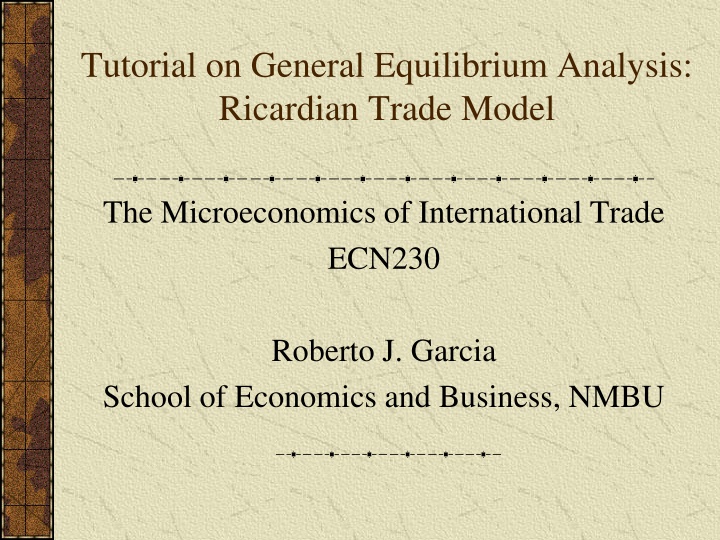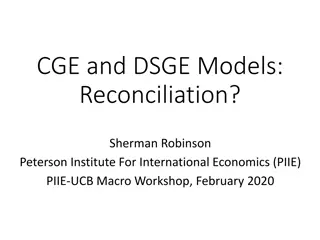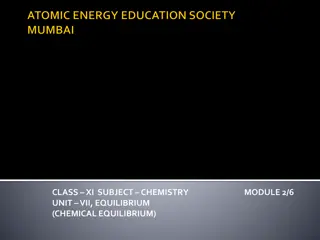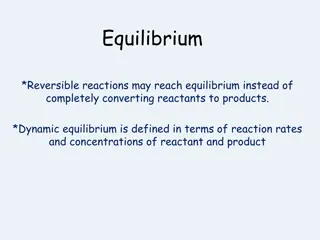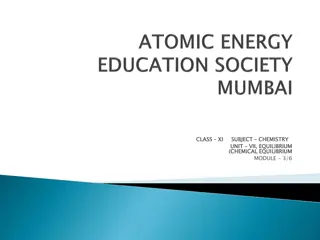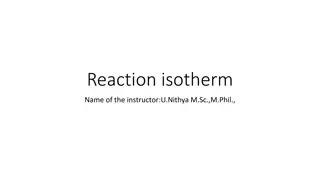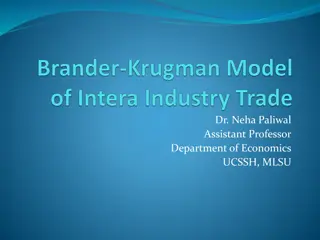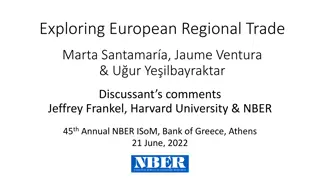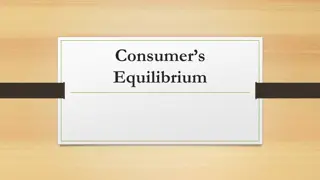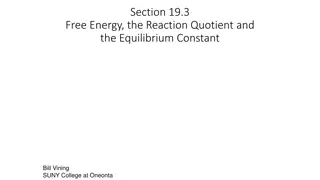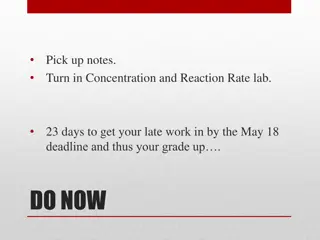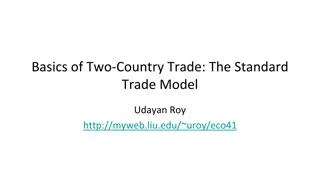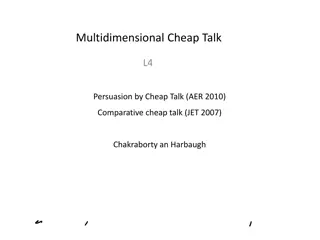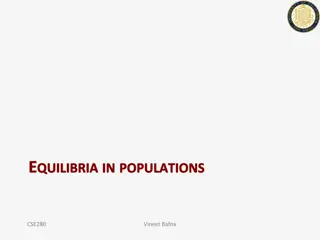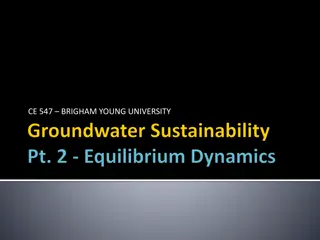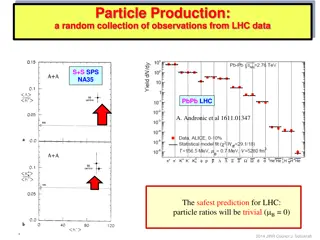General Equilibrium Analysis in Ricardian Trade Model
Tutorial on General Equilibrium Analysis in the Ricardian Trade Model focusing on two countries, North and South, and two goods, bread and wine. The analysis covers production possibilities, supply and demand, and consumption in a closed economic system.
Uploaded on Mar 15, 2025 | 2 Views
Download Presentation

Please find below an Image/Link to download the presentation.
The content on the website is provided AS IS for your information and personal use only. It may not be sold, licensed, or shared on other websites without obtaining consent from the author.If you encounter any issues during the download, it is possible that the publisher has removed the file from their server.
You are allowed to download the files provided on this website for personal or commercial use, subject to the condition that they are used lawfully. All files are the property of their respective owners.
The content on the website is provided AS IS for your information and personal use only. It may not be sold, licensed, or shared on other websites without obtaining consent from the author.
E N D
Presentation Transcript
Tutorial on General Equilibrium Analysis: Ricardian Trade Model The Microeconomics of International Trade ECN230 Roberto J. Garcia School of Economics and Business, NMBU
General equilibrium trade analysis I Ricardian trade model Model specification Two countries: North and South Two goods: bread (B) and wine (W) One factor: labor (L) all else if fixed, e.g. (land) Base situation example 1 Countries are initially closed to trade (autarky) Given information Production Possibilities North 100 50 South 20 100 Bread (B) Wine (W) North has an absolute advantage in bread production South has an absolute advantage in wine production 1
General equilibrium trade analysis I Representation of North s economy Step 1. Production in North pre-trade Production possibilities curve (PPC) Technology permits North to produce 100 units of B or 50 units of W or any linear combination of both Constant production trade-off of 1B for W or 1W for 2B Slope of PPC is B/ W = 2 North 100 50 B W Bread 100 90 B = 20 80 W = 10 70 60 50 40 30 20 PPCN 10 Wine 20 30 10 40 50 70 100 Linear PPC implies constant marginal cost (MC) 2
General equilibrium trade analysis I Step 1. Production in North pre-trade, continued A linear PPC implies constant marginal rate of product transformation (constant MC of switching production from B to W). Trade-off in production is 100B = 50W which implies a MC of 1B = W 1W = 2B Constant MC implies horizontal supply until the max production level is reached and then becomes vertical (kinked supply curve) North s supply of bread North s supply of wine Price of B in terms of W Price of W in terms of B [SW]North [SB]North 3B 1W 2B W 1B Quantity of B Quantity of W 3 20 40 60 20 40 50 80 100
General equilibrium trade analysis I Step 2. Consumption in North pre-trade Consumption information not given Closed economy: consumption must equal production Consumption possibilities are same as production possibilities Suppose demand for the goods is given as shown below Bread market: quantity supplied = quantity demanded, [QSo]B= [QDo]B= 60 Wine market: quantity supplied = quantity demanded, [QSo]W= [QDo]W= 20 North s market for bread North s market for wine Price of B in terms of W Price of W in terms of B [SW]North [SB]North [DB]North 3B 1W 2B W 1B [DW]North Quantity of B Quantity of W 40 50 20 40 60 80 100 20 4
General equilibrium trade analysis I General equilibrium in North, pre-trade For each good, quantity supplied = quantity demanded Bread market: 60 units produced = units consumed, [Q0]B= [C0]B Wine market: 20 units produced = units consumed, [Q0]W= [C0]W Markets clear at 1B = W and 1W = 2B Bread North 100 90 PPC 100 20 Q0 60 20 C0 60 20 80 B W [Q0]B [Q0]W [C0]B [C0]W 70 60 50 [Q0]N [C0]N 40 [SWN]0 30 20 10 PPCN CPCN Wine 20 30 10 40 50 70 100 Consumption possibilities curve (CPC) is the budget line Slope of PPC = slope of CPC = B/ W = 2/1 Social welfare (SW) maximization: tangency to the budget line 5
General equilibrium trade analysis I Representation of South s economy Step 1. Production in South pre-trade Production possibilities curve (PPC) Technology permits South to produce 20 units of B or 100 units of W or any linear combination of both Constant production trade-off of 1B for 5W or 1W for 1/5B Slope of PPC is B/ W = 1/5 Linear PPC implies constant marginal cost (MC) South 20 100 B W Bread 100 90 B = 10 80 W = 50 70 60 50 40 30 PPCS 20 10 Wine 6 10 20 30 40 50 70 100
General equilibrium trade analysis I Step 1. Production in South pre-trade, continued Trade-off in production is 20B = 100W 1B = 1/5 W 1W = 5B Constant MC implies horizontal supply until max production level is reached and then becomes vertical (kinked supply curve) South s market for bread South s market for wine Price of B in terms of W Price of W in terms of B [SB]South [SW]South 1B 5W 3W 1W 1/5B Quantity of W Quantity of B 20 40 60 80 10 20 100 7
General equilibrium trade analysis I Step 2. Consumption in South pre-trade Closed economy: consumption must equal production Suppose demand for the goods is given as shown below South s market for bread South s market for wine Price of B in terms of W Price of W in terms of B [SB]South [SW]South 1B 5W 3W 1W 1/5B [DB]South Quantity of B Quantity of W [DW]South 20 10 20 80 50 100 8
General equilibrium trade analysis I General equilibrium in South, pre-trade For each good, quantity supplied = quantity demanded Bread market: 10 units supplied and demanded, [Q0]B= [C0]B Wine market: 50 units supplied and demanded, [Q0]W= [C0]W Markets clear at 1B = 5 W and 1W = 1/5B Social welfare (SW) maximization: tangency to the budget line Slope of PPC = slope of CPC = B/ W = 1/5 Bread South 100 90 PPC 20 100 Q0 10 50 C0 10 50 80 B W [Q0]B [Q0]W [C0]B [C0]W 70 60 50 [SWS]0 40 30 20 CPCN [C0]S PPCS 10 Wine [Q0]S 9 20 30 10 40 50 70 100
General equilibrium trade analysis I Step 3. Pre-trade prices North South 100B = 50W 1B = W 1W = 2B 20B = 100W 1B = 5W 1W = 1/5B North has a lower price of bread: [PB]S> [PB]N 1B costs 5W in South which is higher than W in North North has a comparative advantage in bread production PB> W implies North has an incentive to produce B for export PW< 2B implies consumers in North are better off importing W South has a lower price of wine: [PW]N> [PW]S 1W costs 2B in North which is higher than 1/5 B in South South has a comparative advantage in wine production PB< 5W implies consumers in South better off importing B PW> 1/5 B implies South has an incentive to produce W for export Price differential gives an incentive to trade Pre-trade, P = MC With trade, in sectors where P P > MC country becomes exporter With trade, in sectors where P P < MC, country becomes importer 10
General equilibrium trade analysis 1 Step 4. World prices: terms of trade (TOT) TOT is defined by price and quantities traded International price of bread in terms of wine (or wine in terms of bread) Amount of bread that must be traded to receive a unit of wine (and the reciprocal of wine for bread) TOT: market clearance of world supply and demand World supply is the aggregation of supply in North and South World demand can also be aggregated, but demand was not given Consider the following world demand for each good such that there is equilibrium on the world market at 1B = 1W or 1W = 1B World wine market Price of W in terms of B World bread market [SW]World Price of B in terms of W [DW]World [SB]World 2B [DB]World 5W 1B 3W 1W 1/5B W Quantity of W Quantity of B 11 120 150 20 50 100 100
General equilibrium trade analysis 1 Step 5. Change in price ( P) and economic adjustments TOT was assumed to be 1B = 1W P in North: PBfrom W to 1W and PWfrom 2B to 1B P in South: PWfrom 1/5 B to 1B and PBfrom 5W to 1W Adjustment in production North: PB QBand PW QWuntil complete specialization at [Q1]N South: PW QWand PB QBuntil complete specialization at [Q1]S Adjustment in consumption depends on income and sub effects North Bread South [Q1]N Bread 100 90 100 90 80 [C1]N 80 70 70 [SWN]1 [Q0]N [C0]N 60 60 50 TOT 50 TOT [SWN]0 40 30 40 30 [SWS]0 [C1]S [SWS]1 20 20 [Q0]S = [C0]S 10 10 [Q1]S Wine 12 Wine 70 100 60 40 50 70 80 30 10 20 30 60 100 40 50 90 10 20
General equilibrium trade analysis 1 Step 6. Trade and welfare implications Quantity traded [QT] North: [QT]Nis 30 units of B exported in exchange for 30 units of W imported South: [QT]Sis 30 units of B imported in exchange for 30 units of W exported Production World [Q1]N 100 100 Consumption [C1]N 70 30 Trade [QT]N 30 -30 [QT]S -30 30 [Q1]S [C1]S 30 70 B W 100 0 0 100 South North TOT TOT B = 30 Imports B = 30 Exports W = 30 W = 30 Exports Imports There is only one TOT at which all markets are in equilibrium Conditions: no government intervention, identical goods, competitive markets and no transactions/transport costs. 13
General equilibrium trade analysis 1 Step 6. Welfare implications The change in prices from pre-trade to the terms of trade increases purchasing power in both countries (outward shift in CPC or budget line) and raises utility (SW) The gains from trade results from the process of specialization and trade that improves efficiency and welfare Efficiency in resource allocation Efficiency in production Efficiency in consumption Efficiency in exchange 14
General equilibrium trade analysis 1 Concluding comments General lessons from the results Price differentials create an incentive for trade A cost-competitive country has a comparative advantage and will be a net exporting country in a free trade situation A high-cost country has a comparative disadvantage and will be a net importing country in a free trade situation Specialization and trade result in gains that represent efficiency in resource use, production, consumption and exchange The optimal amount traded is determined by the TOT bringing all markets into equilibrium Limitations and weaknesses of the model Underlying technology assumes constant MC rather than increasing costs Linear PPC means shifting resources between sectors comes at no additional cost and that complete specialization is possible Model predicts no losers, only winners 15
